Your elearning platform has a considerable impact on the learning experience. If it’s clunky, your students will feel frustrated before they even start learning. But if it’s smooth and easy to use, learning becomes something they actually enjoy — and that’s the goal, right?
It’s not just about your students. A solid platform makes teaching easier, helping you focus on what you do best: sharing knowledge and creating impact.
That’s why choosing the right platform is so important. It’s not just about features or pricing — you need to make sure it matches the overall learning experience you want to deliver.
To help you make the right choice, we’ve rounded up the top ten online learning platforms that make teaching online simpler, smoother, and way more effective.
Skip ahead:
TL;DR: The best digital learning platforms [free and paid]
Here’s a quick table showing the top online learning tools we’ll discuss in this article.
| Recommended Digital Learning Platforms for 2025 | ||||
| Best For | G2 Rating | Top Features | Pricing | |
| Thinkific | Custom course creation | 4.7/5 |
|
Free plan available; paid plans start at $149/mo |
| Coursera | Accredited certificates & degrees | 4.5/5 |
|
Free courses available; paid courses start at $9.99 |
| LinkedIn Learning | Professional skill-building | 4.4/5 |
|
$39.99/mo or $239.88/yr |
| SkillShare | Creative skills & projects | 3.4/5 |
|
$168/yr or $14/mo |
| edX | Formal education | 4.5/5 |
|
Free classes are available; certificates start at $50 |
| OpenLearning | Micro-credentials & Community | 4.6/5 |
|
Free courses; credentials $150-$500 |
| Udemy | Variety & affordability | 4.5/5 |
|
Courses from $10 to $200 |
| Treehouse | Coding & web development | 4.3/5 |
|
$25/mo or $250/yr |
| MasterClass | Learning from experts | 4.5/5 |
|
$10/mo (billed annually) |
| Khan Academy | Free foundational education | 4.5/5 |
|
Free |
What value do online learning platforms bring?
In a paper titled Online Learning Platforms: Reconstructing Modern Higher Education, Zi-Yu Liu, Natalya Lomovtseva, and Elena Korobeynikova argue that online learning platforms can change the way higher education works in the future. They said the greatest benefits of this type of tool include “greater freedom of access, lower education prices, the possibility of dividing the content of the e-course into modules, the flexibility of education, the ability to keep up with the modern pace of life, and the ability to define criteria for assessing knowledge.”
How to choose the best online learning platform
In general, you should look at the structure, course content, community, and price when evaluating which online learning platform is best suited for you. This will apply regardless if you’re using it to learn or to monetize your content!
Choosing the right online learning platform will generally mean balancing these four aspects in a way that works best for you.
-
Structure of the platform
Course structure is important because it leads to a better learning experience and more effective delivery of professional development programs. As an example, you can probably piece together knowledge on almost any topic through YouTube, but it would lack a structured and progressive environment. This would make it hard for students to learn independently.
-
Available course content
Looking at the course content is key to whatever you’re planning to learn or teach. All online degree programs and course materials are somewhat unique in how they approach any given subject. Take web development or programming, for example. There are so many principles, languages and frameworks that you can learn that it can’t simply be covered by individual courses. Some specialization is necessary.
If you’re planning to deliver a course through an online learning platform, it will help to look for ones that offer similar topics already. You can also look for platforms that offer similar setups. Free or mini-courses attract a much different audience than Bachelor’s degree programs!
-
Community support
Community makes the learning process much more fun and effective. When you’re stuck and can ask your peers for help, it reinforces what you’ve just learned with another perspective. Plus, doing something with a cohort of students is much more motivating than going alone.
From the teaching perspective, you can leverage learning communities to empower brainstorming, independent problem-solving, and passion-building for the course topic.
-
Pricing
Price is another key factor in selecting course materials that work for you. There are many free courses available, but paid ones tend to be more engaging and of higher quality. Some courses offer free trials while others offer refunds if you don’t like it. Some courses give you lifetime unlimited access while others rely on a subscription model or only work for a limited time.
Whether you’re monetizing or purchasing a course, you need to consider the value that the course provides to the student. Is the topic of interest, and does it provide enough content to be worth the pricing model offered?
When you’re selling through an online learning tool, you’ll also want to consider if there are any added costs. Sometimes the cost is accrued per sale, and sometimes it is a monthly fee.
What’s the difference between online learning platforms and learning management systems?
When you’re researching which online learning platform is right for you, it’s important to know how it differs from other similar solutions such as learning management systems (LMS) and online course websites.
An online learning platform is a user-facing environment where students can learn new skills. In comparison, a learning management system is a back-end solution that provides all the necessary tools to the online learning platform so it can function smoothly. This would provide features like uploading videos, creating quizzes, grading assignments and much more.
Online learning platforms are similar to online course websites. In practice, the difference is that the online learning platforms tend to offer more flexibility than course websites. Online course websites are used for course creation, whereas online learning platforms can encompass all kinds of learning experiences, from short videos to online degrees.
The top 10 eLearning platforms for instructors and learners
Here are our top recommended online course platforms.
-
Thinkific: Best for custom course creation and digital products
G2 Rating: 4.7/5
Kicking things off with Thinkific: an online platform that lets you create and monetize all types of digital products — from ebooks to memberships and online courses.
Thinkific stands out for its versatility. Not only does it help you create and sell online courses globally, but it also provides tools for marketing so you can get in front of the right audience quickly. For example, you can integrate Thinkific with your email marketing software and send promotional newsletters to people on your list directly.
That’s not all. As a Thinkific course creator, you have complete ownership over your course and content — unlike many marketplaces.
Key features
- White-label mobile app
- Blended learning support
- AI-powered course landing pages
Pricing
Thinkific has a free plan that allows you to start building courses right away. Paid plans provide you with access to more engagement, tracking, and monetization features and start at $149 per month.
For learners, Thinkific’s courses are all priced independently by the course creators using the platform. Take some time to research a topic that you love, and you’ll likely find a bunch of free courses, too!
Thinkific reviews: What Thinkific users are saying
“It was just so easy. I decided to stick with it, and I have never had any problems. If I’d known that platforms like Thinkific were available to me, I think I could have handled it better on my own from the beginning.” — Amanda Schonberg
-
Coursera: Best for accredited certificates and degrees
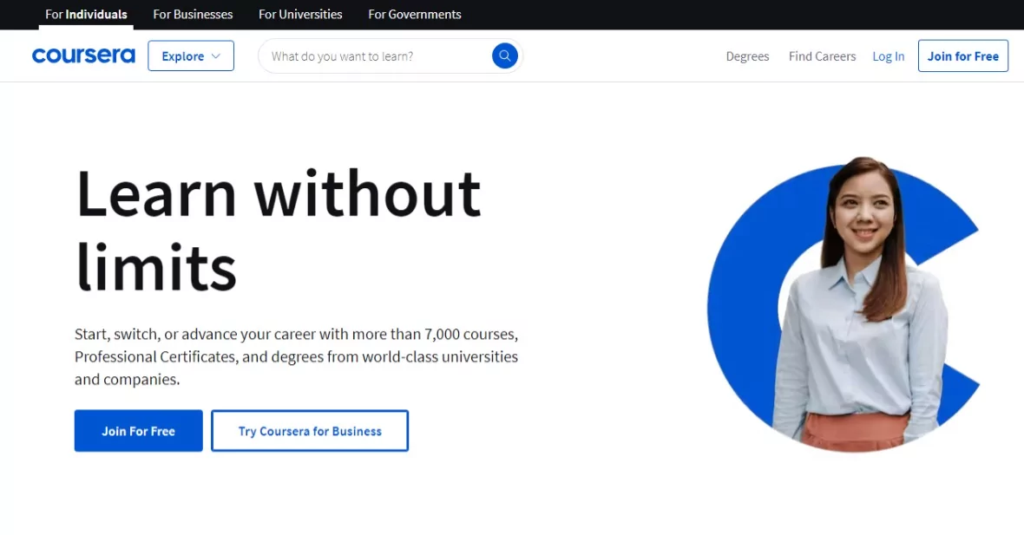
G2 Rating: 4.5/5
Coursera partners with top universities like Stanford and Yale, offering certificates and degrees recognized by employers. Whether you want to boost your career or explore a new subject, Coursera has thousands of courses to choose from.
Top features
- Multi-lingual support
- Mobile apps for on-demand learning
- Learners can access courses offline
Pricing
Lots of courses are available for free. Paid courses start at $9.99, with certificate-level courses beginning at $39, and university courses at $2,000. You can also choose to pay $59 a month or a $399 annual fee to unlock all the courses on Coursera. However, the monthly or yearly subscriptions do not include university degrees or MasterTrack certificates.
Coursera review: What users are saying
“Being a mother — especially a working mother means I’m constantly trying to juggle my schedule, my kids’ schedules, and work. I am very grateful for the flexible and remote learning programs that Coursera has to offer.” — Kenia R.
-
LinkedIn Learning: Best for professional skill building
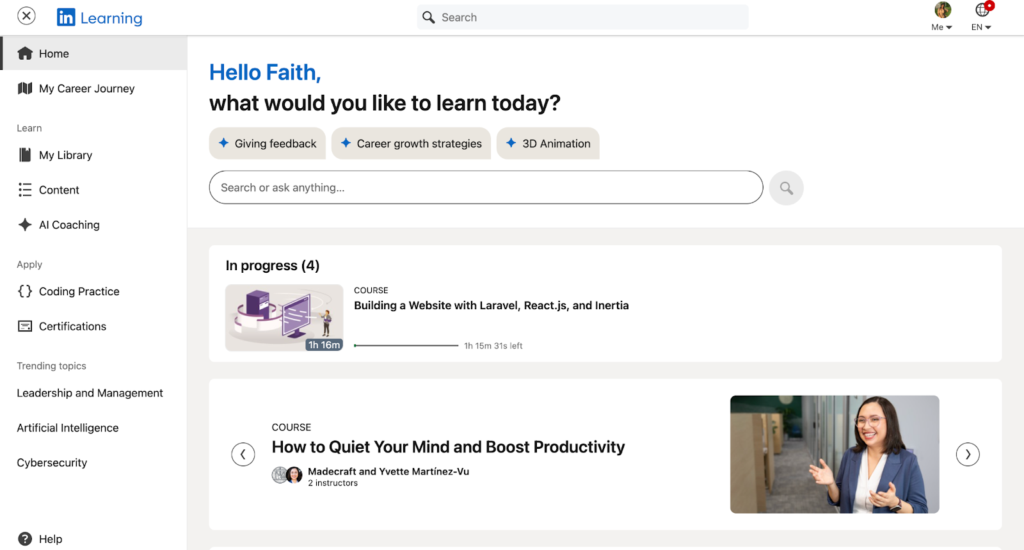
G2 Score: 4.4/5
LinkedIn Learning is an online education platform that offers video courses taught by industry experts in business, technology, and creative fields.
It provides professional development courses on topics like leadership, marketing, programming, design, and more. The platform is subscription-based, but some employers, universities, and libraries offer free access.
Since it’s integrated with LinkedIn, users can showcase completed courses and certificates on their profiles, making it a valuable platform for career growth and skill-building.
Top features
- AI-powered coaching
- Personalized learning plans
- AI-assisted content creation
LinkedIn Learning Pricing
Individual courses vary between $20 and $50. LinkedIn Learning costs $39.99 for a monthly subscription and $239.88 for an annual plan (which is a 50% savings!) These plans also give you access to LinkedIn Premium, with advanced networking and career-building tools.
Bulk pricing is also available for companies or educational institutions that want to offer the platform to their organization.
LinkedIn Learning reviews: What LinkedIn Learning uses are saying
“Step by step, we’re leveraging LinkedIn Learning to exchange knowledge and create a more open learning culture,” said Stefanie. “We’re changing the learning mindset to teach our coworkers how they can use LinkedIn Learning to build up their skills and grow their careers.” — Stefanie Reich
-
Skillshare: Best for creative skills and projects
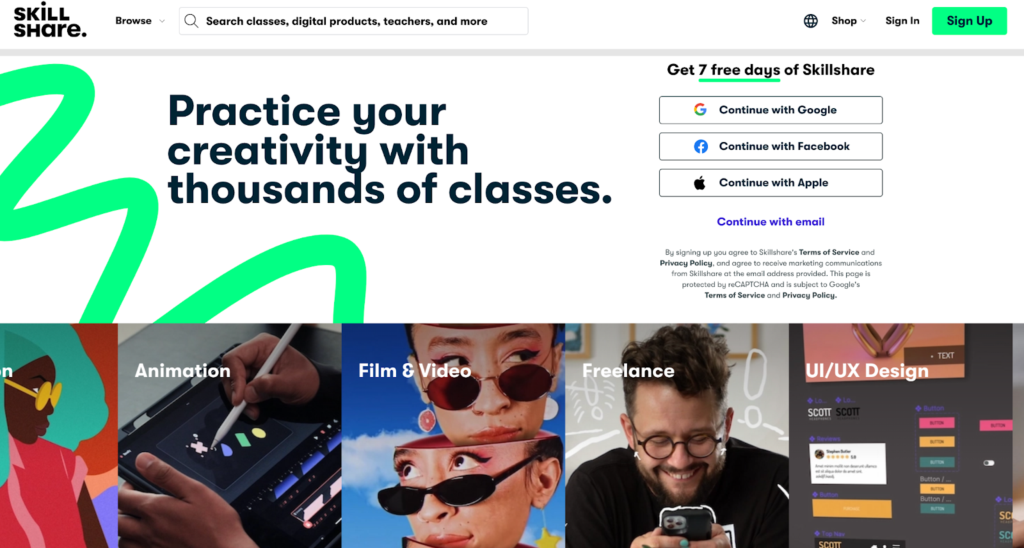
G2 Rating: 3.4/5
Skillshare is great for learning creative skills in a flexible, accessible way. Most courses are project-based and led by real-world creatives, making it a favorite for artists, designers, and makers.
Key features
- Course monetization
- Pre-recorded classes
- Hands-on support through teacher programs
SkillShare pricing
The pricing seems to depend on the country where you reside. However, on average, you can expect to pay $168 per year or $14 per month.
SkillShare reviews: What users are saying
“I absolutely love Skillshare! There are a huge range of subjects to choose from with different levels usually available. The rating system is terrific for picking teachers. I’ve also never had a bad teacher—of the classes I’ve taken, the teachers have all been wonderful. Can’t recommend Skillshare enough!” — Elizapainter
Related: Skillshare vs Thinkific – A detailed comparison
-
edX: Best for formal education
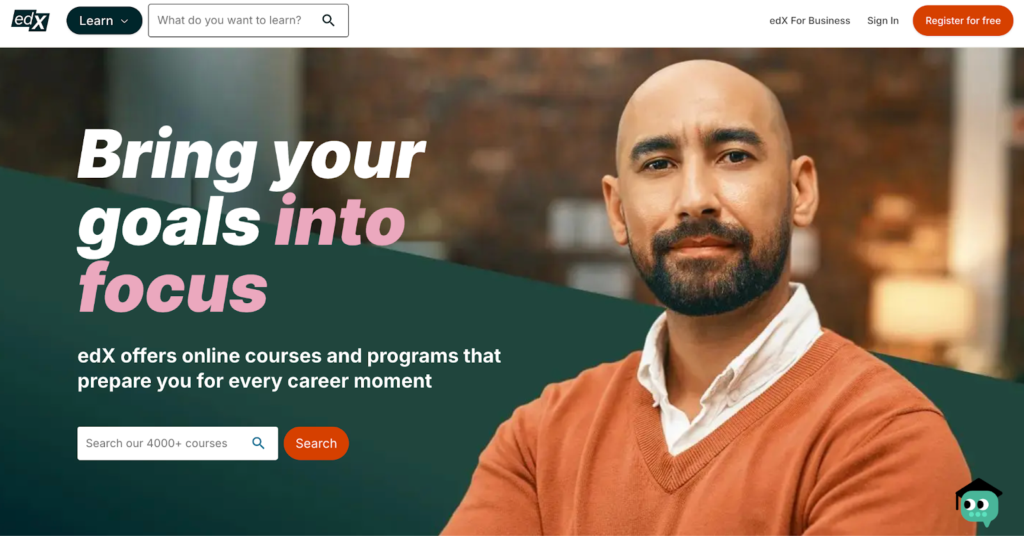
G2 rating: 4.5/5
edX offers a library of courses from top universities like Harvard and MIT. It’s perfect for learners who want formal education without the high cost of in-person programs. Most courses are STEM-focused but there are options across various subjects.
Top features
- Digital certifications
- Admin analytics dashboards
- Industry partnerships
edX Pricing
Free classes do not offer certificates. Courses that come with certificates cost between $50 and $300. Full degree programs combine multiple courses and are usually $1,000 or higher.
“edX has a wide range of courses that are easy to follow and genuinely useful. I just finished a course in Project Management, and it’s already making a difference at work.” — Louise
-
OpenLearning: Best for micro-credentials and community learning
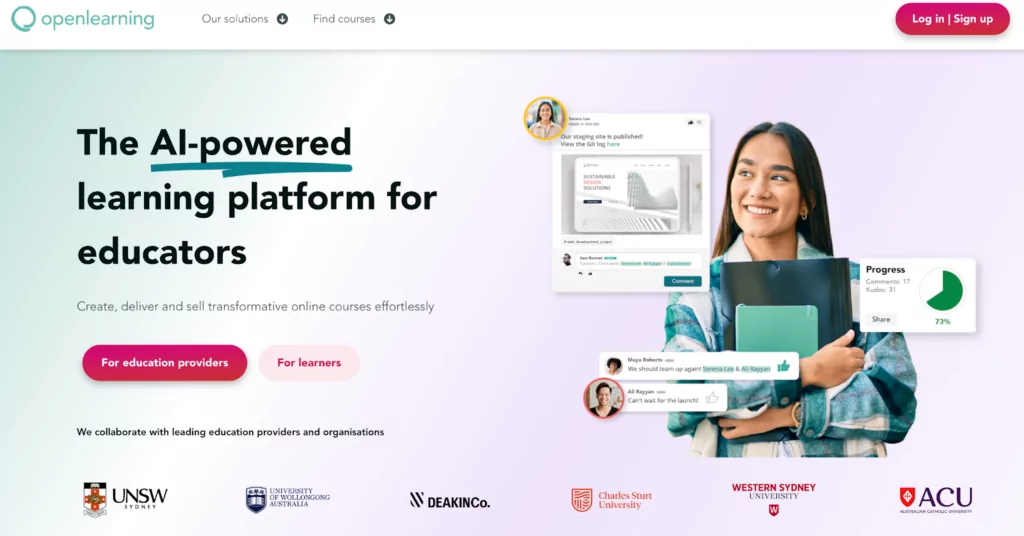
G2 Score: 4.6/5
OpenLearning is a community-focused platform that emphasizes collaboration and interaction. It’s especially popular in Australia and offers micro-credentials that can be applied toward university degrees.
Top features
- Learner progress tracking
- Course completion tracking
- Automatic grading for quizzes
Pricing
Free courses are available; microcredential courses are $150-$500. Course creation starts at $900/year.
Open learning reviews: What users are saying
“The taster team at CSU has had unbelievable support from the OpenLearning team. Whether it involved suggesting ways to improve our search results, creating a results-oriented marketing campaign, developing creative and clean online modules, responding to any technical requests, or providing input and feedback into a myriad of questions, OpenLearning has been there for us.” — Professor Valerie Peachey
-
Udemy: Best for affordable and diverse learning
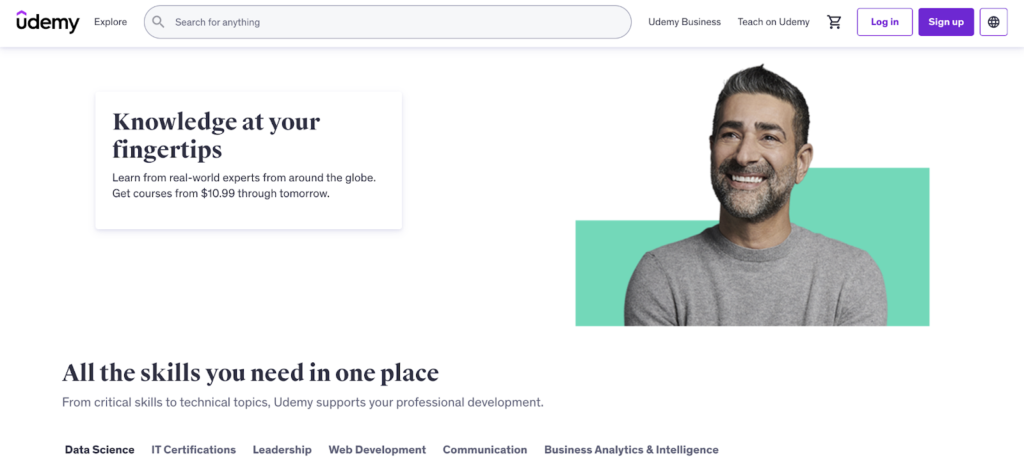
G2 Rating: 4.5/5
Udemy has the widest selection of courses, covering everything from personal development to professional skills. You pay per course, making it easy to pick and choose what you need.
Top features
- Multi-format lectures
- Live course and coaching sessions
- Free trials, upsells and cross-sells
Pricing
Each course on Udemy is sold separately, from as little as $10 and up to $200. Udemy subscriptions are not available to all students. Hence, you may have to shell out on individual courses if you are looking for premium learning. Note that only a selection of 10,500 courses from the full catalog are provided to subscribers on the Personal Plan.
Udemy reviews: What users are saying
“The beauty of Udemy is that anyone, anywhere with an internet connection can learn from the world’s experts. Most courses are taught on demand, meaning you can take them at your own pace, and every course includes a discussion board where you can interact with the instructor and your fellow students. The best part is that most courses are free(!)… and even the paid courses cost far less than what you’d pay at a local college or university.” — Udemy Reviews, edshelf
Related:
-
Treehouse: Best for coding and development courses
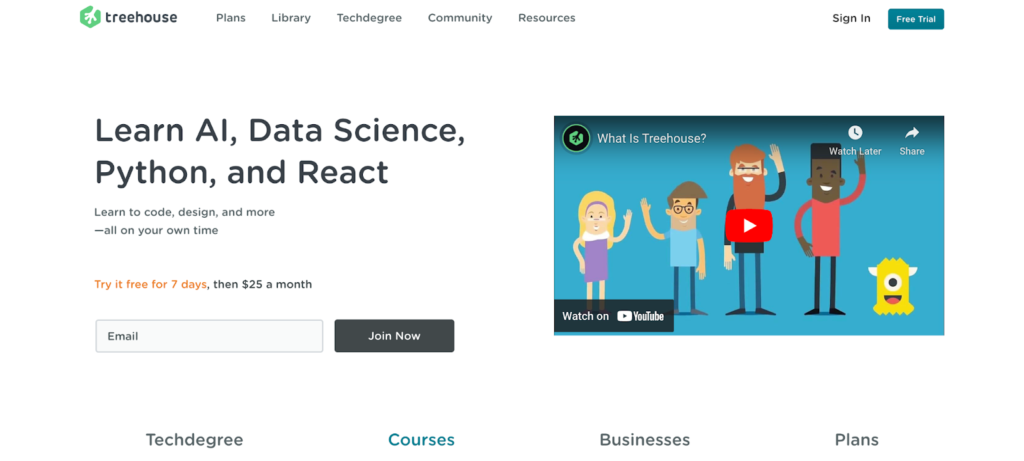
G2 Review: 4.3/5
Treehouse is an interactive platform for learning to code. Courses are organized into tracks, offering structured learning in topics like front-end development, cybersecurity, and app development.
Top features
- Customized learning programs
- Interactive learning
- Community-based learning
Pricing
Treehouse charges $25 per month for regular memberships, or $250 for the annual plan (which essentially gives you two free months). If you want a certificate, however, there are even more structured Techdegree programs starting at $49 per month.
Treehouse reviews: What users are saying
“Treehouse has such a variety of learning, and the easy-to-follow videos, challenges, and practices are fantastic. The community is amazing, especially in the Techdegrees.” — Claire Tregunna
-
MasterClass: Best for learning from experts

G2 Score: 4.5/5
MasterClass features top professionals like Gordon Ramsay and Martin Scorsese, offering insight into their crafts. The platform is perfect if you want to learn directly from industry leaders.
Top features
- Simple content monetization
- Course streaming service
- Bite-sized learning
Pricing
Billed annually, MasterClass costs $10 per month on an Individual plan, $20 for Duo (which allows access on 2 devices), and $23 for Family (up to 6 devices).
MasterClass reviews: What users are saying
“Masterclass is amazing! The instructors are top experts, and the lessons are both inspiring and practical. The platform is user-friendly, and the video lessons are so engaging. I really can’t fault Masterclass!” — Jasmine
-
Khan Academy: Best for free foundational courses
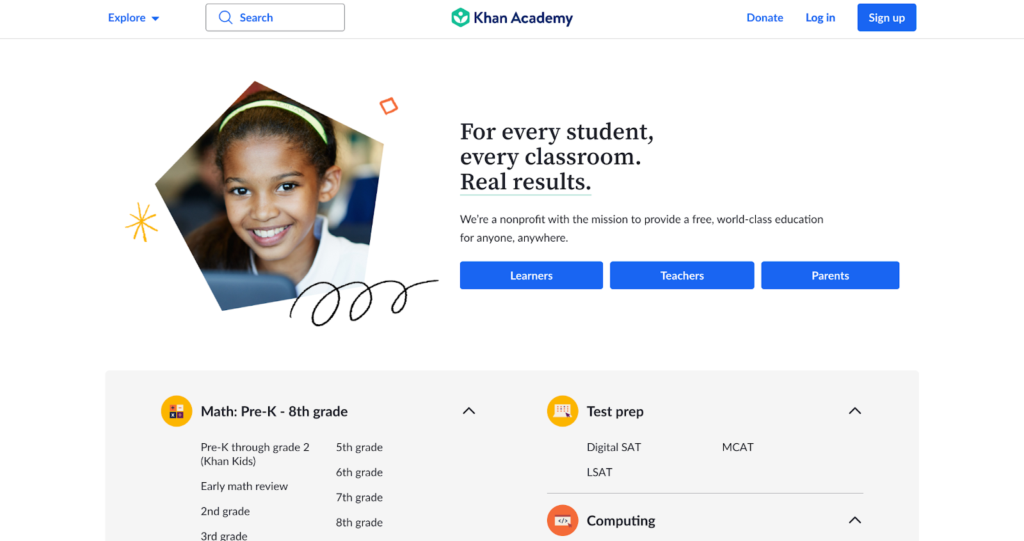
G2 Rating: 4.5/5
Khan Academy offers free courses primarily focused on K-12 subjects like math, science, and economics. It’s a valuable resource for students, parents, and lifelong learners.
Top features
- Assign content to students
- Digital certifications
- Content gamification support
Pricing
Absolutely free! Khan Academy is a non-profit.
Khan Academy reviews: What users are saying
“Fantastic resource for all! I’m so very impressed with the extensive content available to everyone for free via Khan Academy. What a gift!” — Caroline Williams
How to monetize your content on online learning platforms
There are so many online learning platforms and so much to learn on almost any subject imaginable. The best thing is that once you acquire enough knowledge, you can also start monetizing it through your own courses in your own unique way. All you need is the platform to do it!
As you build your course, a few tips to keep in mind are:
- Reflect on the skills you currently have
- Consider what other people want to learn
- Figure out the best structure for your course
- Determine how to price your course
- Consider how you’ll market your course
- Get feedback from your students about what they like or don’t like
- Continually optimize and refresh your content over time.
How to monetize your own content on online learning platforms
There are so many online learning platforms and so much to learn on almost any subject imaginable. The best thing is that once you acquire enough knowledge, you can start monetizing it as well through your own courses in your own unique way. All you need is the platform to do it!
As you build your course, a few tips to keep in mind are:
- Reflect on the skills you currently have
- Consider what other people want to learn
- Figure out the best structure for your course
- Determine how to price your course
- Consider how you’ll market your course
- Get feedback from your students about what they like or don’t like
- Continually optimize and refresh your content over time
Start building an online learning platform with Thinkific
Thinkific is an intuitive and easy-to-use course-creation solution that enables you to build and sell courses of any complexity. No coding skills required — just use a professionally designed template and customize it to your liking using a drag-and-drop editor. As a result, you can create a course in an hour and monetize it for years to come.
Sign up for free here!
Online learning platforms FAQs
Find answers to common questions about online learning platforms.
-
What is the best online learning platform?
Thinkific is the best online learning platform for anyone who wants to sell courses and other digital products. It’s an all-in-one platform where you can create and monetize digital products — with email marketing and payment processing integrations that help you market and sell globally.
-
What is an online learning platform?
An online learning platform is a digital space where individuals can access educational content, take courses, and develop skills through videos, quizzes, interactive exercises, and other learning materials. These platforms can be used for self-paced learning, instructor-led training, or a mix of both.
-
What are the benefits of elearning platforms?
Elearning platforms offer flexibility, cost savings, and personalized learning. They scale easily for large groups, track progress in real time, and maintain consistent training quality. With engaging features like gamification and continuous access to updated content, they provide an effective, efficient way to learn and develop skills.
-
What is the difference between an online learning platform and learning management system?
An online learning platform is where users can directly access courses. These platforms provide video lessons, quizzes, and certificates, but users typically don’t have control over course management. Thinkific is a great example of an online learning platform.
A learning management system, on the other hand, is software used by companies, schools, or organizations to create, manage, and track learning programs. Examples include Moodle, Blackboard, or TalentLMS.
This blog was originally published in February 2024, it’s since been updated in February 2025 with the newest information.










